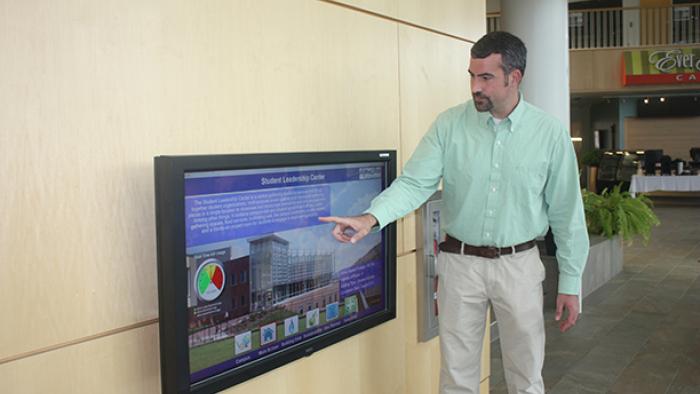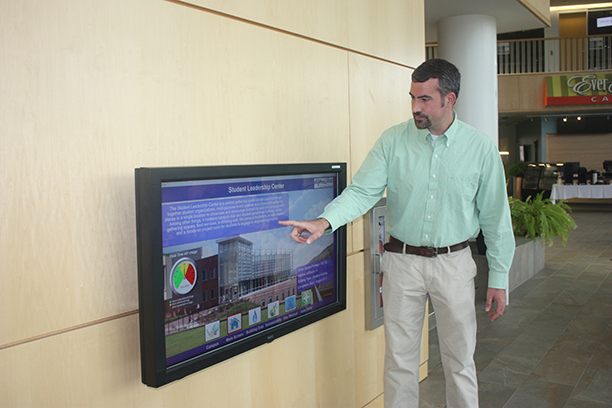
At a glance
 Through evaluating building-by-building benchmarks, the college as a whole performed very well in the Preliminary Energy Analysis report which was not weather-normalized. According to the analysis, out of seven similar-sized SUNY campuses, Alfred State’s energy consumption is noticeably lower than five of them, and ties results for first place.
Through evaluating building-by-building benchmarks, the college as a whole performed very well in the Preliminary Energy Analysis report which was not weather-normalized. According to the analysis, out of seven similar-sized SUNY campuses, Alfred State’s energy consumption is noticeably lower than five of them, and ties results for first place.

According to a new report from the New York Power Authority, no similar-sized SUNY campuses perform better than Alfred State for the least amount of energy used per square footage. Several campus buildings were approximately 40 percent more energy efficient than the average among college campuses across the country.
“As we maintain our facilities and update them, energy efficiency is a priority,” said Alfred State President Dr. Skip Sullivan. “Not only are efficiency initiatives good for the environment, they also afford us the opportunity to practice what we teach regarding sustainability and our instruction in green energy jobs. Plus, these efficiencies give us an immediate bonus by lowering our ongoing energy costs.”
Through evaluating building-by-building benchmarks, the college as a whole performed very well in the Preliminary Energy Analysis report which was not weather-normalized. According to the analysis, out of seven similar-sized SUNY campuses, Alfred State’s energy consumption is noticeably lower than five of them, and ties results for first place.
The Student Leadership Center, Shults Hall, the Veterinary Technology Center, and the Hinkle Memorial Library are the top-performing facilities when energy consumption is analyzed by the Energy Utilization Index (EUI). When benchmarked against other college and university facilities nationwide, these four buildings consume approximately 40 percent less energy according to their EUI score.
Providing testament to the effectiveness of the college’s sustainability-related efforts, the analysis concludes that the college takes a truly preventive approach when allocating resources for equipment maintenance, instead of a reactive approach or waiting for equipment to fail. The report further states that maintenance has helped to preserve assets beyond their expected life cycle, and inspections reveal “a pride of workmanship on the part of facility staff.”
The energy analysis also identified opportunities for further energy efficiency by continuing adoption of smart controls to automatically save energy when areas are unoccupied, use of more high-efficiency interior lights and installation of sub-metering to further pinpoint energy usage.
Whether it’s complex programs like installation of highly efficient decentralized boilers, or more simple advice to encourage users to save energy and to recycle waste, Director of Facilities Operations Glenn Brubaker said being environmentally conscious is simply “the right thing to do.”
“Our society has become much more aware of global warming and the effects of energy misuse,” he said. “In many cases it also saves a lot of money and sometimes it is just putting simple practices into place that can make a big difference over time.”

